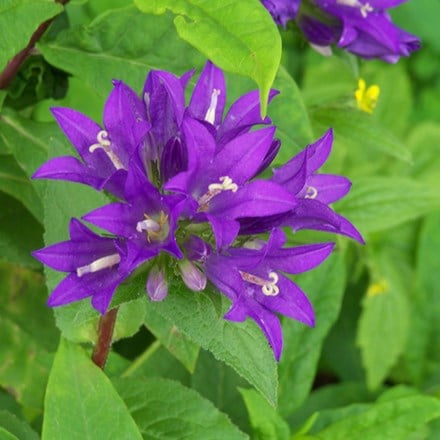Gladiolus 'Ruby' (papilio hybrid)
gladioli (syn. Gladiolus papilio 'Ruby')
- approx 50 seeds
- £3.99
- available to order from spring
Delivery options
- Seed Packets (only) £2.99
- Position: full sun
- Soil: moist but well drained soil
- Rate of growth: average
- Flowering period: July to August
- Hardiness: frost hardy (may need protection in winter)
A rare and beautiful form, which has a more refined charm than its blousier cousins. The large, ruby red flowers have darker markings on the inside and they appear in open sprays on the tall stems from midsummer. The leaves are shorter and sword shaped and have a greyish green colour.
Listed by prominent designers in Gardens Illustrated magazine as one of their Top 100 plants, Gladiolus 'Ruby' is said to be one of the hardier gladioli, and will spread by underground runners to form good-sized clumps over time.
Listed by prominent designers in Gardens Illustrated magazine as one of their Top 100 plants, Gladiolus 'Ruby' is said to be one of the hardier gladioli, and will spread by underground runners to form good-sized clumps over time.
Gladioli grow best in full sun and well-drained soil, with protection from strong winds. Once planted, water regularly during dry spells and support plants with canes if needed. Feed every couple of weeks with a high potash fertiliser as the flower spikes develop. Deadhead spent blooms to encourage more flowers further down the stem.
After flowering, allow the foliage to die back naturally so the corms can store energy for the next season. In milder areas, corms can be left in the ground with a dry mulch for winter; otherwise, lift and store them in a frost-free place.
After flowering, allow the foliage to die back naturally so the corms can store energy for the next season. In milder areas, corms can be left in the ground with a dry mulch for winter; otherwise, lift and store them in a frost-free place.
Sow gladiolus seeds indoors in late winter to early spring (February to April). Use trays or small pots filled with a free-draining seed compost and sow thinly on the surface, then cover lightly with a fine layer of compost or vermiculite. Keep at a steady temperature of 18-21°C (64-70°F) and maintain even moisture without overwatering. Germination can take 2–3 weeks or longer.
Once seedlings are large enough to handle, prick out into individual pots and grow on in bright, cool conditions. In their first year, seedlings will develop small corms, which can be planted out the following spring after the risk of frost has passed. Keep weed-free and well watered during the growing season.
Once seedlings are large enough to handle, prick out into individual pots and grow on in bright, cool conditions. In their first year, seedlings will develop small corms, which can be planted out the following spring after the risk of frost has passed. Keep weed-free and well watered during the growing season.
- Pets: Harmful if eaten



